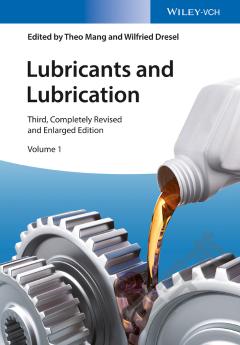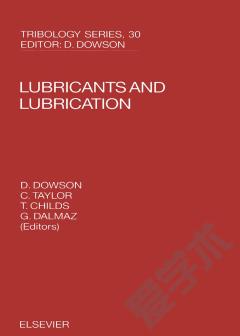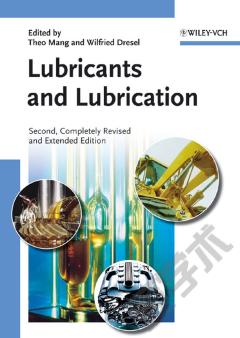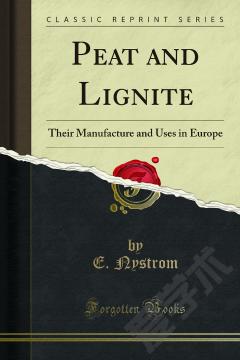Lubricants and Lubrication
The article contains sections titled: 1. Introduction 2. Lubricants in the Tribological System 2.1. Friction 2.1.1. Types of Friction 2.1.2. Friction and Lubrication Conditions 2.2. Wear 3. Rheology of Lubricants 3.1. Viscosity 3.2. Special Rheological Effects 3.3. Viscosity Grades 4. Base Oils 4.1. Historical Review and Outlook 4.2. Chemical Characterization of Mineral Base Oils 4.3. Refining 4.3.1. Distillation 4.3.2. Deasphalting 4.3.3. Traditional Refining Processes 4.3.3.1. Acid Refining 4.3.3.2. Solvent Extraction 4.3.4. Solvent Dewaxing 4.3.5. Finishing 4.4. Base Oil Manufacturing by Hydrogenation and Hydrocracking 4.4.1. Manufacturing Naphthenic Base Oils by Hydrogenation 4.4.2. Production of White Oils 4.4.3. Lube Hydrocracking 4.4.4. Catalytic Dewaxing 4.4.5. Wax Isomerization 4.4.6. Hybrid Lube Oil Processing 4.4.7. All-Hydrogen Route 4.4.8. Gas-to-Liquids Conversion Technology 4.5. Boiling and Evaporation Behavior of Base Oils 5. Synthetic Base Oils 5.1. Synthetic Hydrocarbons 5.1.1. Polyalphaolefins 5.1.2. Polyinternalolefins 5.1.3. Polybutenes 5.1.4. Alkylated Aromatics 5.1.5. Other Hydrocarbons 5.2. Halogenated Hydrocarbons 5.3. Synthetic Esters 5.3.1. Esters of Carboxylic Acids 5.3.1.1. Dicarboxylic Acid Esters 5.3.1.2. Polyol Esters 5.3.1.3. Other Carboxylic Esters 5.3.1.4. Complex Esters 5.3.1.5. Fluorinated Carboxylic Acid Esters 5.3.2. Phosphate Esters 5.4. Polyalkylene Glycols 5.5. Other Polyethers 5.5.1. Perfluorinated Polyethers 5.5.2. Polyphenyl Ethers 5.5.3. Polysiloxanes (Silicone Oils) 5.6. Other Synthetic Base Oils 5.7. Mixtures of Synthetic Lubricants 6. Additives 6.1. Antioxidants 6.1.1. Mechanism of Oxidation and Antioxidants 6.1.2. Compounds 6.2. Viscosity Modifiers 6.2.1. VI Improvement Mechanisms 6.2.2. Structure and Chemistry of Viscosity Modifiers 6.3. Pour Point Depressants 6.4. Detergents and Dispersants 6.4.1. Metal-Containing Compounds (Detergents) 6.4.2. Ashless Dispersants (AD) 6.5. Antifoam Agents 6.6. Demulsifiers 6.7. Dyes 6.8. Antiwear and Extreme Pressure Additives 6.9. Friction Modifiers 6.10. Corrosion Inhibitors 6.10.1. Antirust Additives 6.10.2. Metal Passivators 7. Lubricants in the Environment 7.1. Current Situation 7.1.1. Economic Consequences and Substitution Potential 7.1.2. Agriculture, Economy, and Politics 7.2. Biodegradable Base Oils for Lubricants 7.2.1. Synthetic Esters 7.2.2. Polyalkylene Glycols 7.2.3. Polyalphaolefins 7.2.4. Relevant Properties of Biodegradable Base Oils 7.3. Additives 7.4. Products (Examples) 8. Lubricants for Internal Combustion Engines 8.1. Four-Stroke Engine Oils 8.1.1. General Overview 8.1.1.1. Fundamental Principles 8.1.1.2. Performance Specifications 8.1.1.3. Formulation of Engine Oils 8.1.1.4. Additives 8.1.2. Characterization and Testing 8.1.2.1. Physical and Chemical Testing 8.1.2.2. Engine Testing 8.1.2.3. Passenger Car Engine Oils 8.1.2.4. Engine Oil for Commercial Vehicles 8.1.3. Classification by Specification 8.1.3.1. MIL Specifications 8.1.3.2. API and ILSAC Classification 8.1.3.3. ACEA Specifications 8.1.3.4. Manufacturersâ Approvals 8.1.3.5. Future Trends 8.2. Two-Stroke Oils 8.2.1. Application and Characteristics 8.2.2. Classification 8.2.2.1. API Service Groups 8.2.2.2. JASO Classification 8.2.2.3. ISO Classification 8.2.3. Oils for Two-Stroke Outboard Engines 8.2.4. Environmentally Friendly Two-Stroke Oils 8.3. Tractor Oils 8.4. Gas Engine Oils 8.5. Marine Diesel Engine Oils 8.5.1. Low-Speed Crosshead Engines 8.5.2. Medium-Speed Engines 8.5.3. Lubricants 9. Gear Lubrication Oils 9.1. Introduction 9.2. Requirements of Gear Lubrication Oils 9.3. Tribology of Gears 9.3.1. Friction Conditions of Gear Types 9.3.2. Specific Gear and Transmission Failure 9.4. Gear Lubrication Oils for Motor Vehicles 9.4.1. Lubricants for Gear Drives in Commercial Vehicles 9.4.2. Lubricants for Gear Drives in Passenger Cars 9.4.3. Lubricants for Automatic Transmissions and CVTs 9.5. Multipurpose Lubricants in Vehicle Gears 9.6. Gear Lubricants for Industrial Gears 10. Compressor Oils 10.1. Gas Compressor 10.1.1. Displacement Compressors 10.1.2. Dynamic Compressors 10.1.3. Preparation of Compressed Air 10.1.4. Oils for Compression of Other Gases 10.1.5. Characteristics of Gas Compressor Oils 10.1.6. Standards and Specifications of Compressor Oils 10.2. Refrigerator Oils 10.2.1. Introduction 10.2.2. Minimum Requirements 10.2.3. Classification 10.2.4. Viscosity Selection 11. Turbine Oils 11.1. Demands on Turbine Oils - Characteristics 11.2. Formulation 11.3. Specifications 11.4. Turbine Oil Circuits 11.5. Monitoring and Maintenance of Turbine Oils 11.6. Life of (Steam) Turbine Oils 11.7. Gas Turbine Oils - Application and Requirements 11.8. Fire-Resistant, Water-Free Fluids for Power Station Applications 11.9. Lubricants for Water Turbines and Hydroelectric Plants 12. Metalworking Fluids 12.1. Mechanism of Action 12.2. Water-Miscible Cutting Fluids 12.2.1. Composition 12.2.2. Corrosion Protection and Corrosion Test Methods 12.2.3. Concentration of Water-Mixed Cutting Fluids 12.2.4. Stability of Coolants 12.2.5. Foaming Properties 12.2.6. Preservation of Coolants with Biocides 12.3. Neat Cutting Fluids 12.3.1. Specifications 12.3.2. Composition 12.4. Application 12.4.1. Machining with Geometrically Defined Cutting Edges 12.4.2. Machining with Geometric Non-Defined Cutting Edges 12.5. Storage 12.6. Environmental Aspects 12.7. New Trends in Coolant Technology 13. Forming Lubricants 13.1. Sheet Metal Working Lubricants 13.1.1. Deep Drawing 13.1.2. Stretch Drawing and a Combination of Stretch and Deep Drawing 13.1.3. Shear Cutting 13.1.4. Choice of Lubricants 13.1.5. Sheet Metal Forming in Automobile Manufacturing 13.2. Lubricants for Wire, Tube, and Profile Drawing 13.2.1. Wire Drawing 13.2.2. Profile Drawing 13.2.3. Tube Drawing 13.2.4. Hydroforming 13.3. Lubricants for Rolling 13.3.1. Rolling Steel Sheet 13.3.2. Rolling Aluminum Sheet 13.3.3. Rolling of Other Materials 13.4. Lubricants for Solid Metal Forming 14. Lubricating Greases 14.1. Introduction 14.2. Components of Greases 14.2.1. Thickeners 14.2.1.1. Simple Soaps 14.2.1.2. Complex Soaps 14.2.2. Other Ionic Organic Thickeners 14.2.3. Nonionic Organic Thickeners 14.2.4. Inorganic Thickeners 14.2.5. Miscellaneous Thickeners 14.2.6. Temporarily Thickened Fluids 14.3. Base Oils 14.3.1. Mineral Oils 14.3.2. Synthetic Base Oils 14.4. Grease Structure 14.5. Additives 14.6. Manufacture of Greases 14.6.1. Metal Soap-Based Greases 14.6.2. Oligourea Greases 14.6.3. Gel Greases 14.7. Grease Rheology 14.8. Performance 14.8.1. Test Methods 14.8.2. Analytical Methods 14.9. Applications 14.9.1. Roller Bearings 14.9.2. Cars, Trucks, Construction Vehicles 14.9.3. Steel Mills 14.9.4. Mining 14.9.5. Railroad, Railway 14.9.6. Gears 14.9.7. Food-Grade Applications 14.9.8. Textile Machines 14.9.9. Applications with Polymeric Materials 14.10. Ecology and the Environment 14.11. Grease Tribology 15. Solid Lubricants 15.1. Classification 15.1.1. Class 1: Structural Lubricants 15.1.2. Class 2: Mechanical Lubricants 15.1.3. Class 3: Soaps 15.1.4. Class 4: Chemically Active Lubricants 15.2. Characteristics 15.2.1. Crystal Structures of Lamellar Solid Lubricants 15.2.2. Heat Stability 15.2.3. Thermal Conductivity 15.2.4. Adsorbed Films 15.2.5. Chemical Stability 15.2.6. Particle Size 15.3. Products Containing Solid Lubricants 15.3.1. Powders 15.3.2. Dispersions and Suspensions 15.3.3. Greases and Grease Pastes 15.3.4. Pastes 15.3.5. Dry-Film Lubricants 15.4. Industrial Uses of Products Containing Solid Lubricants 15.4.1. Screw Lubrication 15.4.2. Roller-Bearing Lubrication 15.4.3. Slide Bearing, Slide Guideway, and Slide Surface Lubrication 15.4.4. Chain Lubrication 15.4.5. Plastic and Elastomer Lubrication 16. Testing and Analysis 16.1. Base Oil Categories and Evaluation of Various Petroleum Base Oils 16.2. Laboratory Methods for Testing Lubricants 16.2.1. Density 16.2.2. Viscosity 16.2.3. Refractive Index 16.2.4. Structural Analyses 16.2.5. Flash Point 16.2.6. Surface Phenomena 16.2.7. Cloud Point, Pour Point 16.2.8. Aniline Point 16.2.9. Water Content 16.2.10. Ash Content 16.2.11. Acidity, Alkalinity 16.2.12. Aging Tests 16.2.13. Hydrolytic Stability 16.2.14. Corrosion Tests 16.2.15. Oil Compatibility of Seals and Insulating Materials 16.2.16. Evaporation Loss 16.2.17. Analysis of Grease 16.3. Mechanical - Dynamic Testing Methods for Lubricants 16.3.1. Tribological System Categories within Lubricant Tests 16.3.2. Standardized and Nonstandardized Test Methods for Lubricants 16.3.3. Common Mechanical - Dynamic Testers 17. Economic Aspects 18. Disposal of Used Lubricating Oils 18.1. Possible Uses of Waste Oil 18.2. Legislative Influences on Waste Oil Collection and Reconditioning 18.3. Re-refining 19. Toxicology and Occupational Health 19.1. Safety Aspects of Handling Lubricants (Working Materials) 19.1.1. Polycyclic Aromatic Hydrocarbons (PAK, PAH, PCA) 19.1.2. Nitrosamines in Cutting Fluids 19.2. Skin Problems Caused by Lubricants 20. Acknowledgement
{{comment.content}}








 京公网安备 11010802027623号
京公网安备 11010802027623号